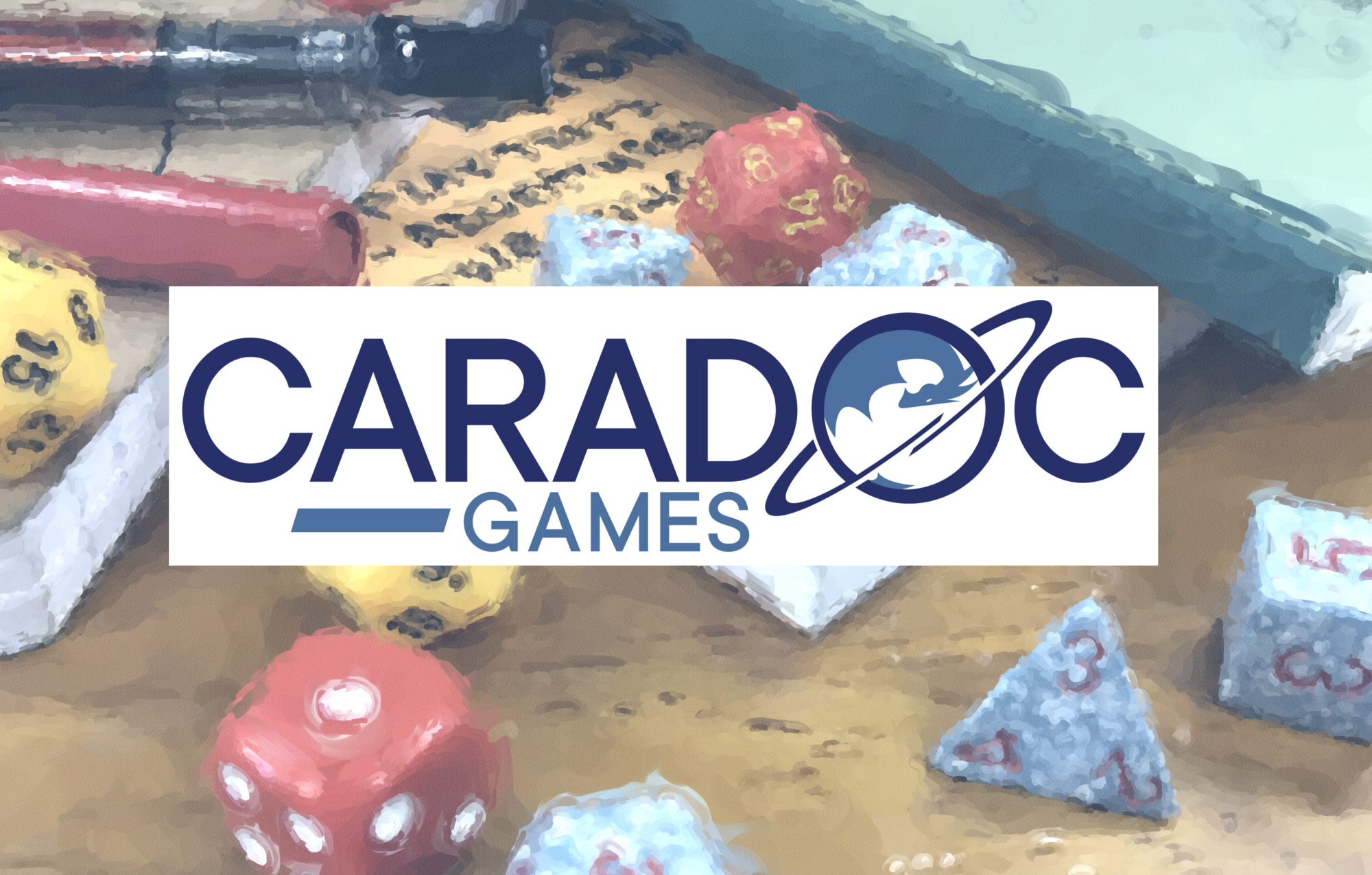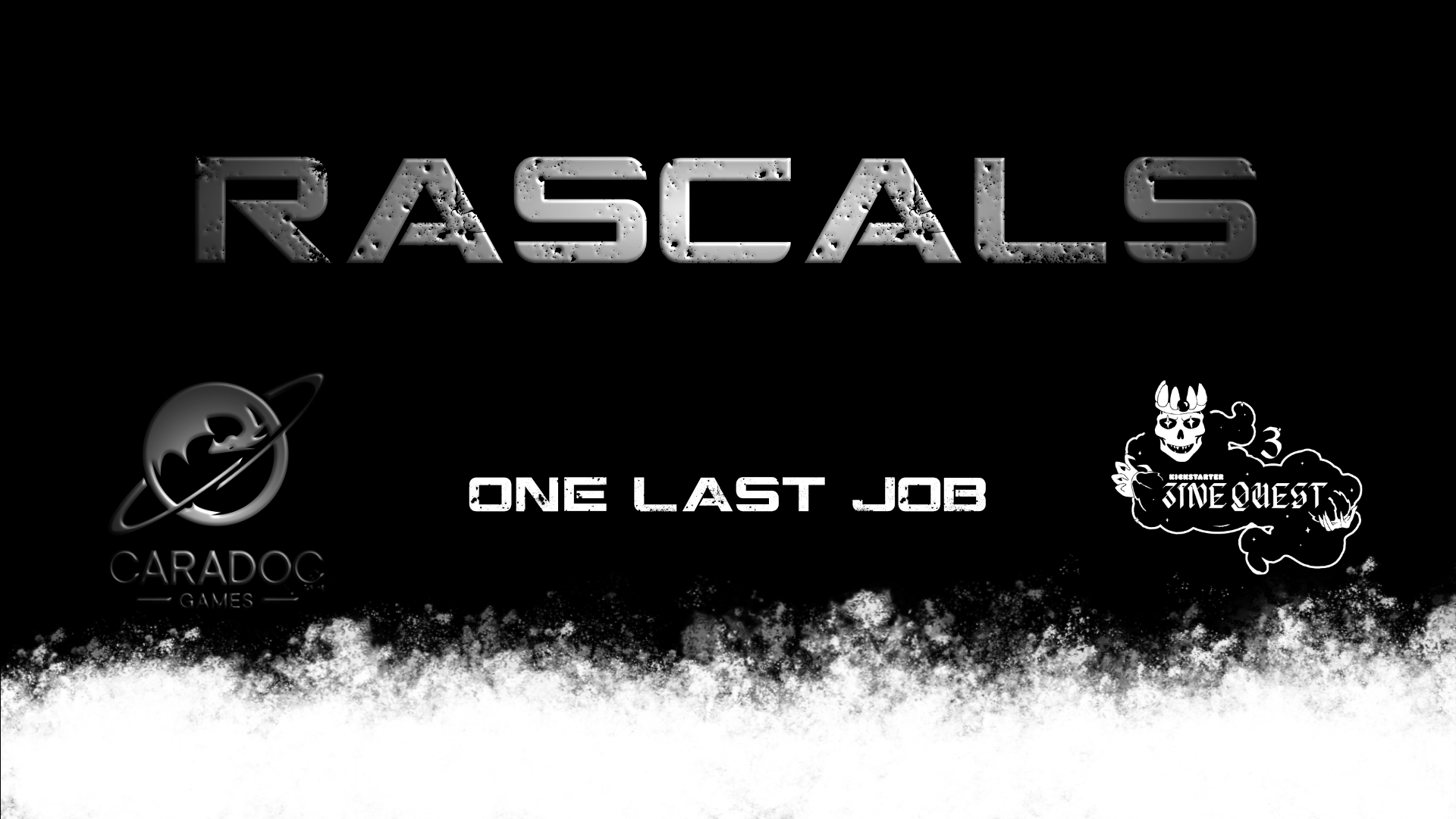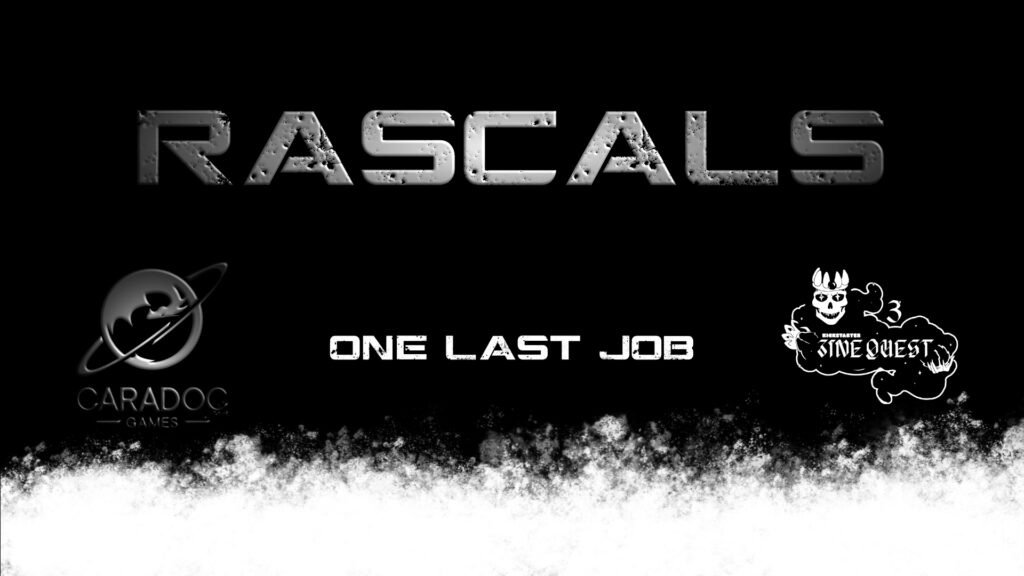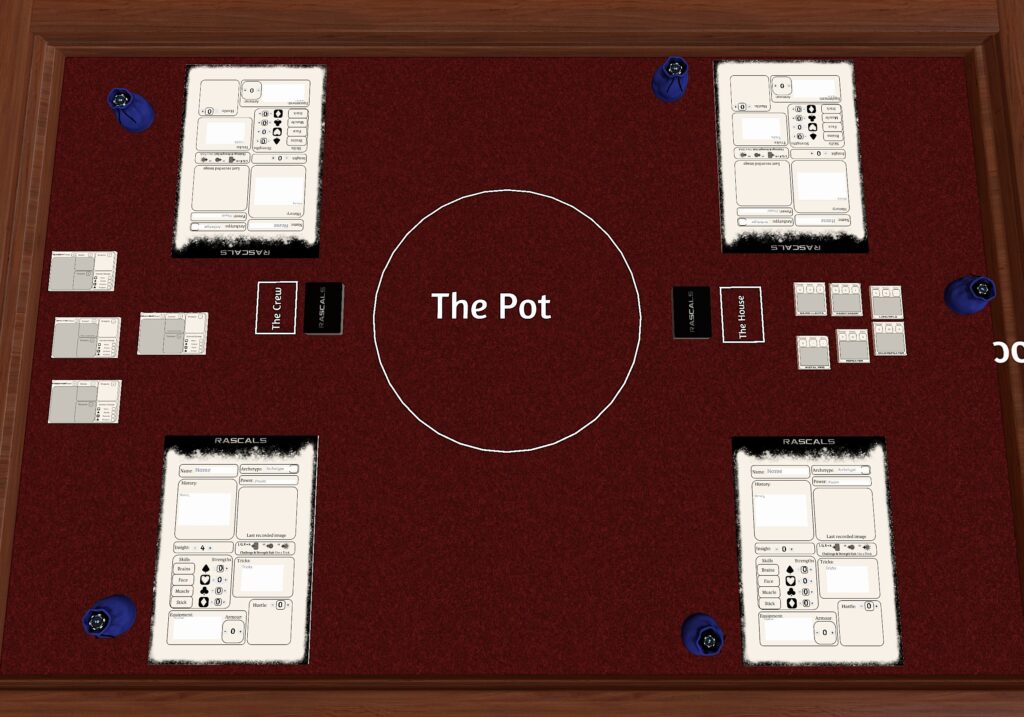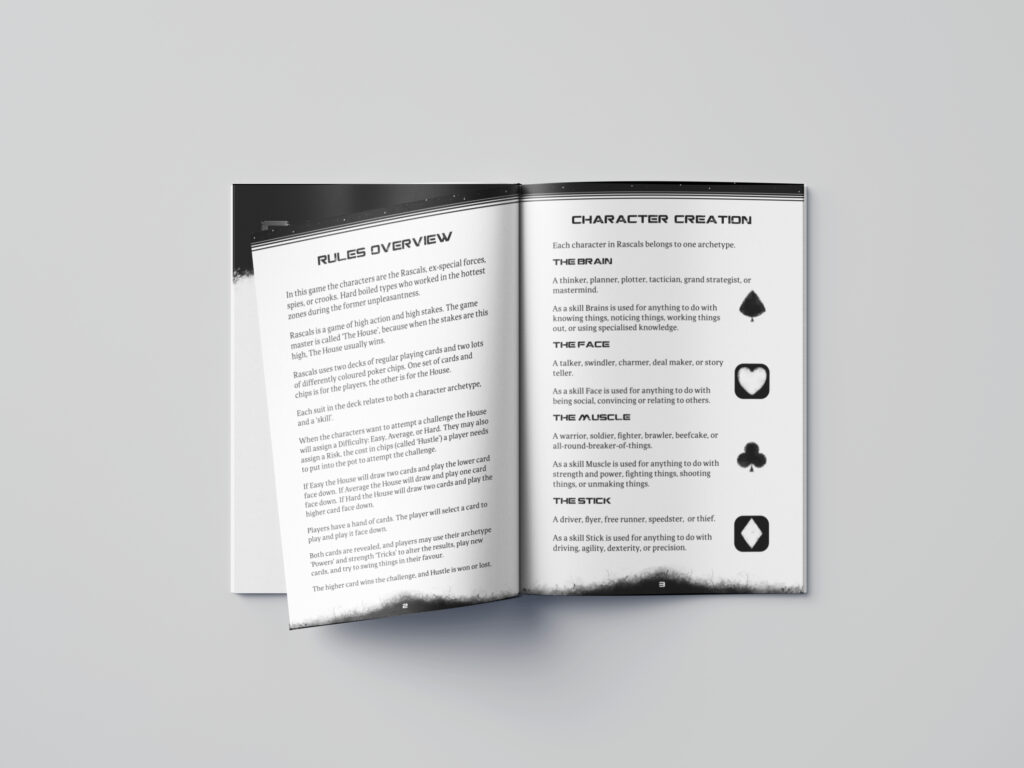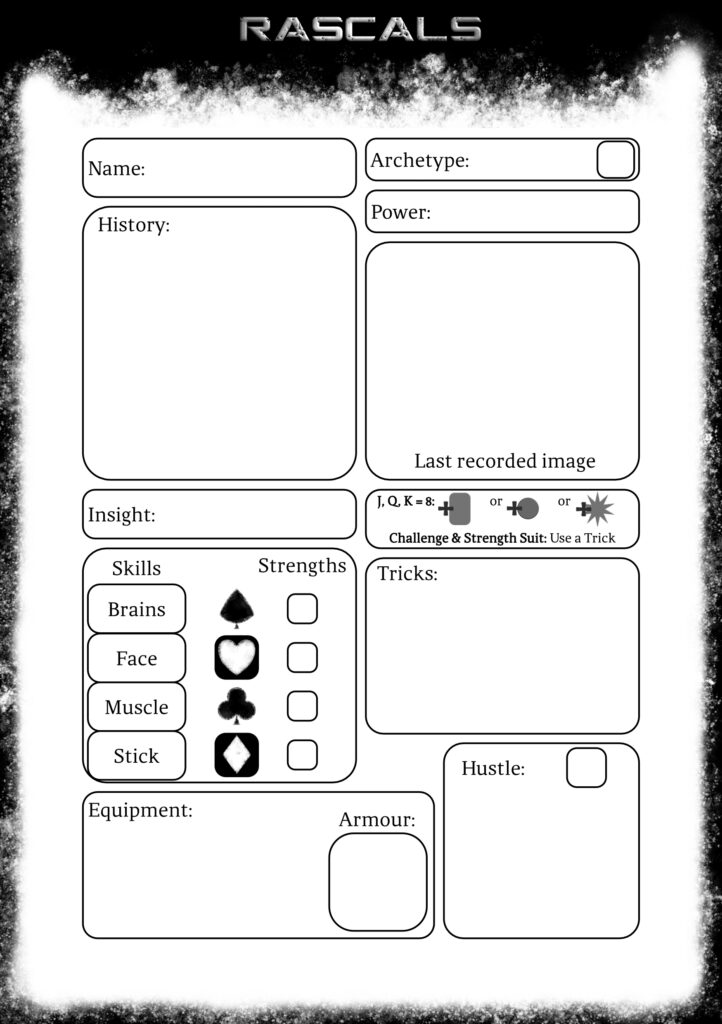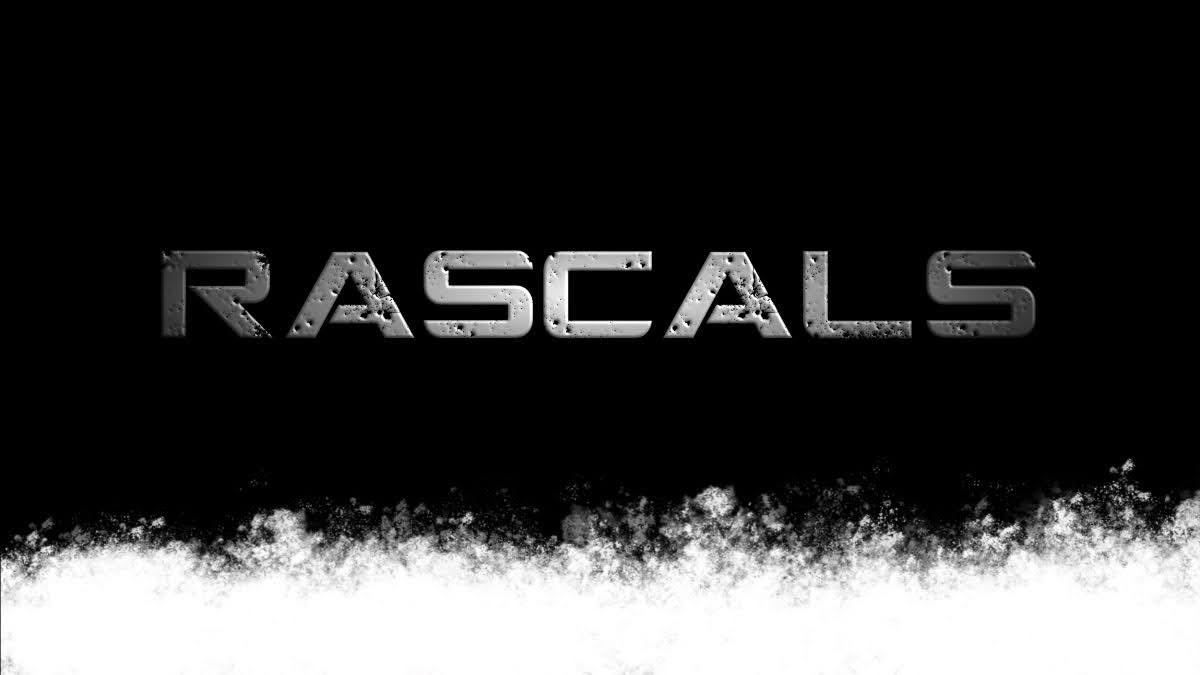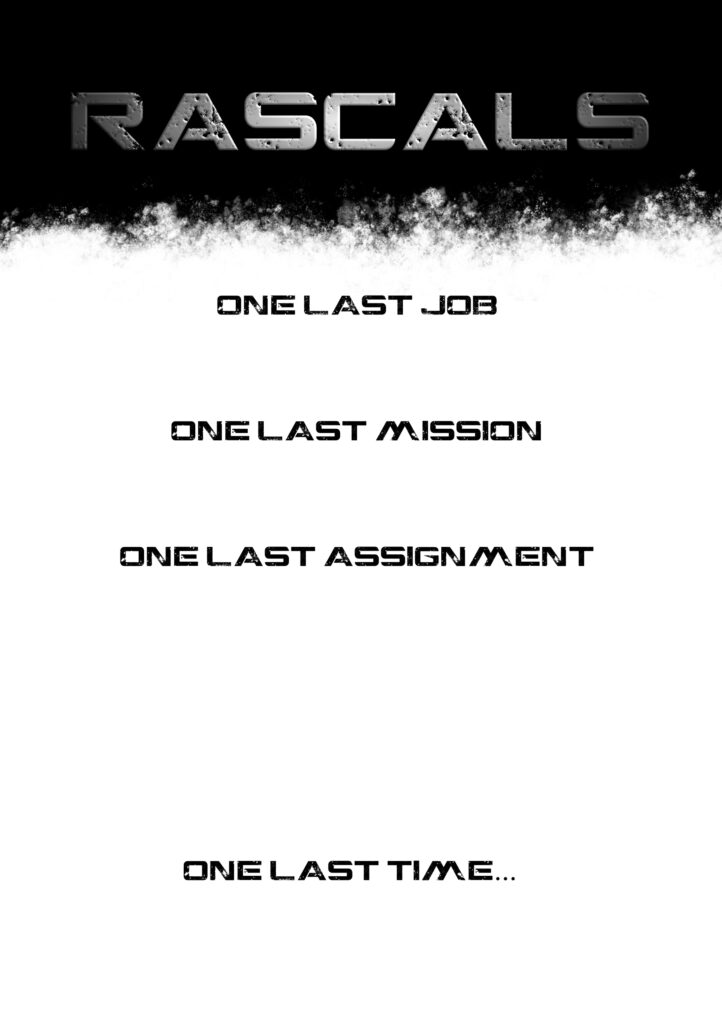You’ve been called back. Back to the life you thought you had escaped. A foul plot is afoot…
Rascals is an action-adventure science fiction role playing game. It was inspired by such movies as Rogue One, Bourne, The Dirty Dozen, and so on.
Rascals uses traditional playing cards as the core engine for resolving skills tests and challenges. Today I want to talk a little about how this works, and some of the design decisions I made when creating this system.
You can find the pre-launch page to Rascals here, hit Notify to follow the project…
Context
Before I delve into why I made the system this way we need to know how the system actually works.
In Rascals each player will have a hand of cards. When a player undertakes a Challenge, or Reacts to something, they will play a card from their hand into the middle of the table (called the Pot). The GM (called the House), will also play a card according to the Difficulty of the Challenge or React.
- Easy: The House will draw two cards, will discard the higher card face up, and play the lower card face down into the pot.
- Average: The House will draw and play a card to the pot.
- Hard: The House will draw two cards, will discard one face up, and play the other one (note that the House can choose which to play).
Discarding a card face up in an Easy or Hard Challenge will give the player some indication of what they need to succeed. The House may choose the card to play in a Hard challenge, because many adversaries have abilities that can be activated when they play a card of a specific suit. Sure the House may play a card thinking they have a good chance of losing the Challenge, but it might mean that the Adversary gets to do something extra, or special…
Players will redraw cards on Reactions, but not for Challenges they undertake. Cards are the characters inspiration, their drive, and their focus. If they get caught in a series of Challenges – a chase, a complicated engineering problem, heated debate, or firefight, their hand will slowly dwindle. Their options will contract…
Why?
Because in the movies this game is inspired by there is always that dramatic narrative, the heroes are challenged, they are set upon, beat down, they escape and struggle, thrown from one bad situation into another, they are running out of options, out of luck…
Until…
They manage to duck into a cafe and avoid pursuit, find that vet’s clinic and patch themselves up, or lay low in a dive-hotel, giving them a chance to reset, draw breath, plan…
This is the drive behind Rascals, the second act, the false victory leading to despair up to the point where all seems lost, but…
The purpose of this system is to have the characters pushed, to stress their hand and their Hustle (that’s another post), encouraging the players to find ways their characters can break the momentum, change the scene, take control, seize the initiative.
When characters find space in a scene they can use a Second Wind to regain cards or heal some, if they escape a scene they can redraw their hand… it’s about movement and momentum. About changing the ground. It’s about the characters, beat down and hurting, relentlessly pursued, struggling as they roll from one encounter to another, and finally managing to find space, time, to catch their breath, to reform…
This momentum swing – in a narrative arc going from the second to third act and back again – is exactly what the card system in Rascals is designed to reflect. Players should start feeling powerful and in control, slowly feel the pressure mounting as the action builds, then feel the drive to force change – a change of momentum, a change in scene, an escape and reprieve…
Rascals is all about that second act, when things start going sideways for our heroes, when, in the movie theatre, we are on the edge of our seats waiting to see how they’ll escape this one… and the relief and excitement when they do, when they pause the tempo, when they manage to find a way to wrest back control.
Did I mention the prelaunch page? It’s here… go hit Notify!

